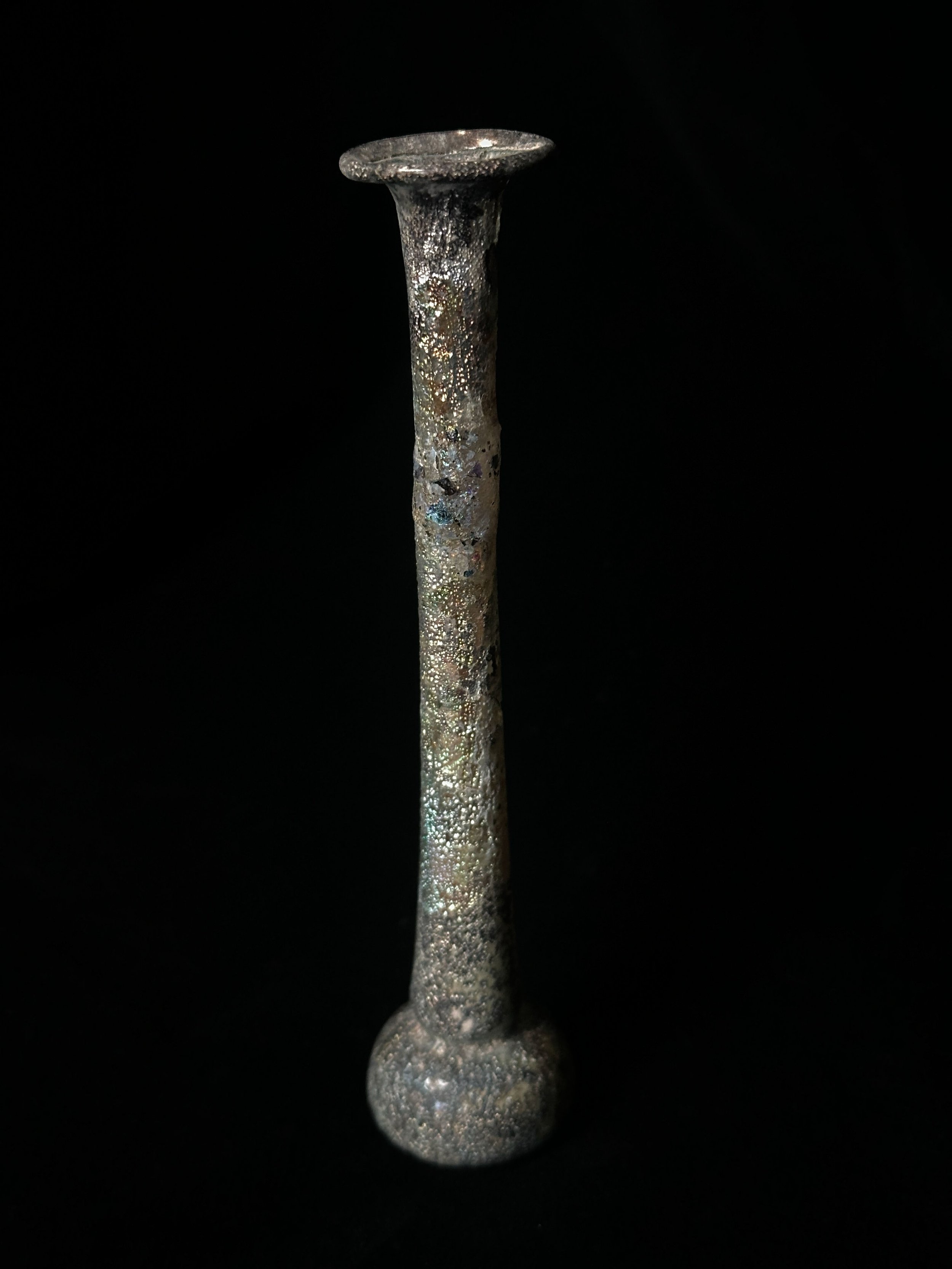 Image 1 of 4
Image 1 of 4

 Image 2 of 4
Image 2 of 4

 Image 3 of 4
Image 3 of 4

 Image 4 of 4
Image 4 of 4





UNEARTHED Roman Iridescent Glass Vessel
2nd–3rd century A.D.
A remarkably elegant Roman glass vessel with flared rim, narrow stem, and wide dimpled foot — a form at once delicate and architectural. The surface shimmers with subtle iridescence, the result of nearly two millennia of chemical interaction between glass and earth.
Two small punctures and areas of ancient repair only deepen its intrigue: evidence of its long life and passage through time. The form is referenced in David Whitehouse’s Roman Glass in the Corning Museum of Glass (vol.1, item 259) — an example of refined utilitarian design in the ancient world.
An object that transcends function, now serving as a vessel for light itself.
Measurements: 12.5 grams, 14.5 cm (5 3/4 in.)
Material: Blown glass
Origin: Roman Empire; ex-London art market, 1990s
Condition: Areas of iridescence and encrustation. Repaired with visible holes, as found.
Provenance:
Ex London art market, 1990s. From a private collection in London, UK.
2nd–3rd century A.D.
A remarkably elegant Roman glass vessel with flared rim, narrow stem, and wide dimpled foot — a form at once delicate and architectural. The surface shimmers with subtle iridescence, the result of nearly two millennia of chemical interaction between glass and earth.
Two small punctures and areas of ancient repair only deepen its intrigue: evidence of its long life and passage through time. The form is referenced in David Whitehouse’s Roman Glass in the Corning Museum of Glass (vol.1, item 259) — an example of refined utilitarian design in the ancient world.
An object that transcends function, now serving as a vessel for light itself.
Measurements: 12.5 grams, 14.5 cm (5 3/4 in.)
Material: Blown glass
Origin: Roman Empire; ex-London art market, 1990s
Condition: Areas of iridescence and encrustation. Repaired with visible holes, as found.
Provenance:
Ex London art market, 1990s. From a private collection in London, UK.
